TESTING
What tests have we done and what do they show?
Ohmic volumetric heating is used to simulate Natural Circulation Flow at low temperatures by using salt water and electric current as an energy input.
Fluid is heated at low point in the core, as temperature increases the fluid rises like a hot air balloon.
Heat is removed at high point, and cooling increases fluid density and fluid sinks.
Natural Circulation Flow is generated by coupling these two processes.
Natural Circulation in Prototypic Geometry/ Volumetric Ohmic Heating
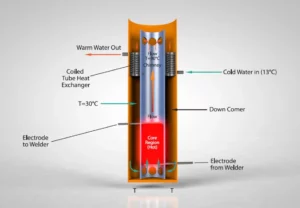
Ohmic heating testing facilitates tests used to validate computational thermal hydraulic models using low temperature salt water. The process provides nearly identical simulation of actual molten salt at zero cost compared to reactor testing.
Fountain Test
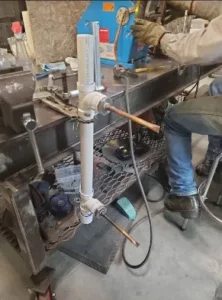
Demonstrated volumetric heat input could generate adequate temperature rise in the saltwater mixture.
MsNB Ohmic Heating Test Results
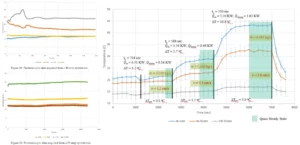
Test data illustrates system temperature changes starting from initial zero heat output and with increasing load. Response is stable and predictable.
Loop Test

Loop test coupled volumetric heating with cooling to generate and confirm observable natural circulation flow
Control Rod Angular Worth
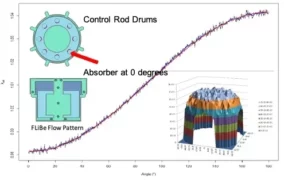
Computer simulation demonstrating MsNB controllability with rotating control drum design.
Thermal Effects: Negative Temperature Coefficient
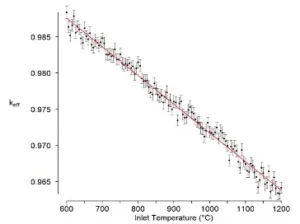
Estimates demonstrate MsNB passive safety, as core temperature increases, power decreases.
MsNB reactor power automatically shuts down if there is and unintended temperature increase
Burnup Simulation Results
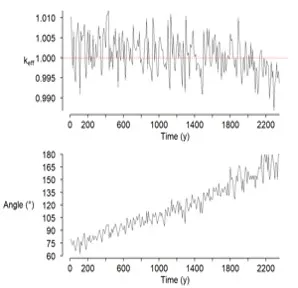
Demonstrates the ability of MsNB is to operate for ten years.
Neutronics Modeling
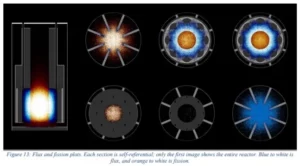
Presents results of MsNB neutronic activity at different elevations in the reactor.
400 KWth MsNB

Simplified overview of MsNB design with natural circulation – Initial CFD Model

